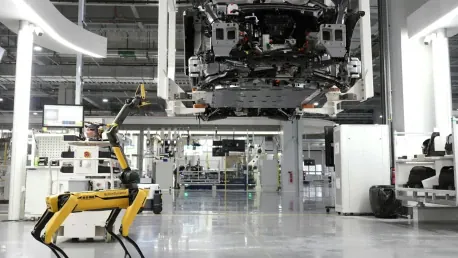
A digital twin is a virtual version of a physical product , process, or system used to simulate and improve its real-world counterpart. Using real-time data along with modeling methods, you can mimic the behavior, properties, and performance of the actual item. In other words, it's like having a

It is the end of an era as sustainability initiatives replace wasteful production practices. The shift toward eco-conscious manufacturing represents a new era, where manufacturers do not have the luxury to overlook environmental needs. As it stands, producing clothes contributes to 10% of global

B2B manufacturers operate in a special environment that mixes traditional methods with new technology. This article looks at how customer portals and a flexible strategy can shape the digital future of industrial manufacturing. First, you will learn more about the current business situation. Many

Consumer AI is constantly discussed and visible in everyday life—Siri, chatbots, smart home devices, filters, and other systems designed to make life easier, more efficient, and personalized. However, industrial AI operates in a completely different league. These systems prioritize precision,

Imagine a world where objects don't just stay as they are manufactured but change, reshape, and grow as their surroundings do. This is now a reality, not just a concept from science fiction movies. 4D printing, the next big innovation in production, brings to the table materials that change their

Today, digital technologies are simplifying, streamlining, and boosting the efficiency of critical processes across industries. For manufacturers, the rise of intelligent tools presents opportunities to build an integrated ecosystem of instruments and systems that work together to create entirely
1 2